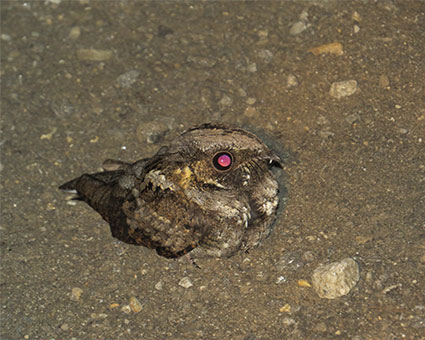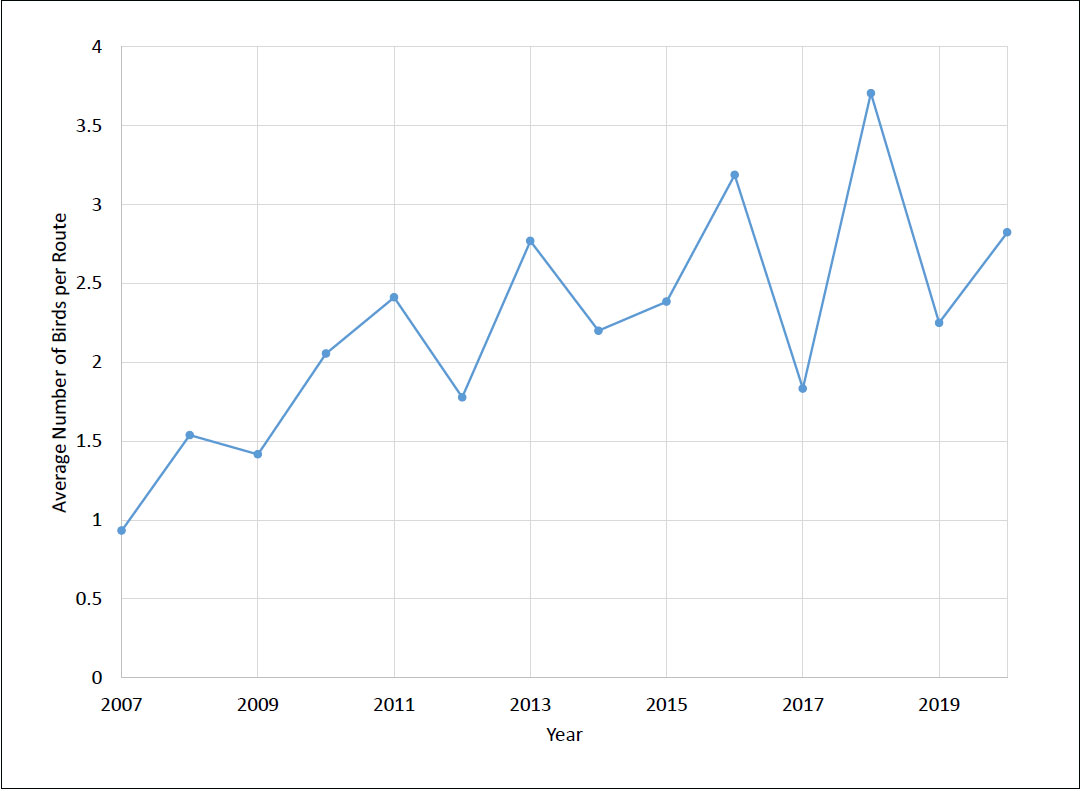Whip-poor-will Update

Article by Pam Hunt
Photo: Eastern Whip-poor-will by Rebecca Suomala
It’s been a while since I’ve provided an update on NH Audubon’s work on Eastern Whip-poor-wills in this newsletter. I stopped doing detailed habitat research in 2016 but another aspect to this project continues unabated: long-term monitoring along 18 roadside survey routes scattered across the state. These routes are the descendants of a pilot project in the Piscataquog River Watershed in 2003, and since 2007 use a protocol developed by NH Audubon and adopted by states and provinces across the species’ range. Each route is nine-miles long, consists of ten stops spaced a mile apart, and surveyed once a year near either the May or June full moon. Other research has shown whip-poor-will calling to be more reliable and persistent when the moon is at least 50% illuminated. Such date restrictions, when combined with weather and volunteer schedules, mean that not all routes get covered in all years, but we’ve generally been able to get data from an average of 15 (of 18 total) routes annually since 2007.
Over those 14 years, the exciting news is that our whip-poor-will population appears to be steadily increasing, although with a lot of annual variation (Figure 1). This is particularly intriguing since this species is in decline over most of its range which has contracted by as much as 50% over the last 20-30 years. Thus, while whip-poor-wills aren’t as widespread in New Hampshire as they were in the 1980s, they seem to be doing quite well in the areas where they still occur regularly. Even anecdotal data suggest that people are hearing them more often than in the recent past.
So why might whip-poor-wills be increasing? We really don’t know, but from my earlier research we do know they prefer early successional or edge habitat, while avoiding areas too close to extensive development. One possibility is that land management in the state’s core whip-poor-will hot spots (particularly the Ossipee Pine Barrens and parts of the upper Merrimack River watershed) has created additional suitable habitat for more birds. Without detailed habitat change data from across the state, or at least in the vicinity of the routes, we can’t really test this hypothesis, but it’s the most likely explanation so far.
Listen to whip-poor-wills calling on NH Audubon’s YouTube channel: https://www.youtube.com/watch?v=H1O80Vo1KPk.
Figure 1: Eastern Whip-poor-will abundance on 18 New Hampshire survey routes since 2007.
